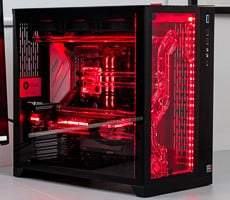ASUS TUF Gaming X3 Radeon RX 5700 Series Review: Great Coolers, Solid Value
|
|
|
| Hardware Used: AMD Ryzen 7 3700X (3.6 - 4.4GHz, 8-Core) ASUS TUF Gaming X570-Plus Wi-Fi (AMD X570 chipset) ASUS TUF Gaming X3 Radeon RX 5700 (8 GB) ASUS TUF Gaming X3 Radeon RX 5700 XT (8 GB) AMD Radeon RX 5700 XT (8GB) NVIDIA GeForce RTX 2060 SUPER (8 GB) 32GB Corsair DDR4-3200 Sabrent Rocket 4.0 NVMe SSD Integrated Audio & Network |
Relevant Software: Windows 10 Pro x64 NVIDIA Drivers: v451.67 AMD Drivers: Adrenalin v20.5.1 Benchmarks Used: Unigine Superposition VRMark 3DMark "Fire Strike" 3DMark "Time Spy" Middle-Earth: Shadow Of War Shadow Of The Tomb Raider Strange Brigade Gears 5 FarCry 5 |
|
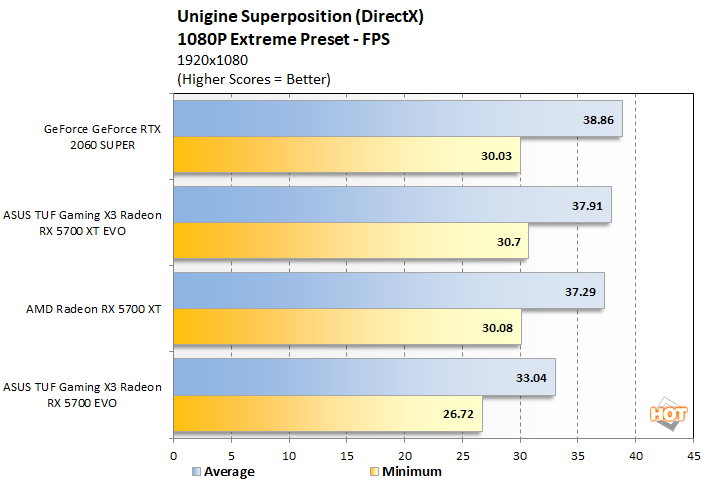
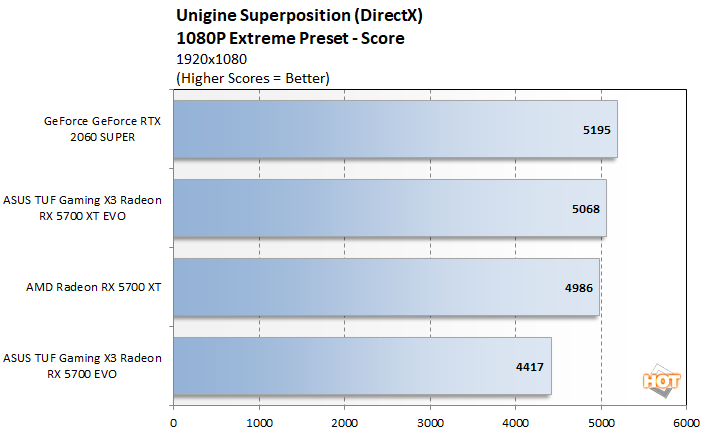
The 1080p Extreme test in Superposition sees our Radeon heroes fall behind the GeForce RTX 2060 SUPER competition. However, the ASUS TUF Gaming X3 Radeon RX 5700 XT EVO does outclass the AMD reference card as expected by a slight margin. The TUF Gaming X3 RX 5700 EVO trails by a considerable margin in the computed score, and the frame rates bear that out. The slower RX 5700 card trails the faster one by greater than 10%.
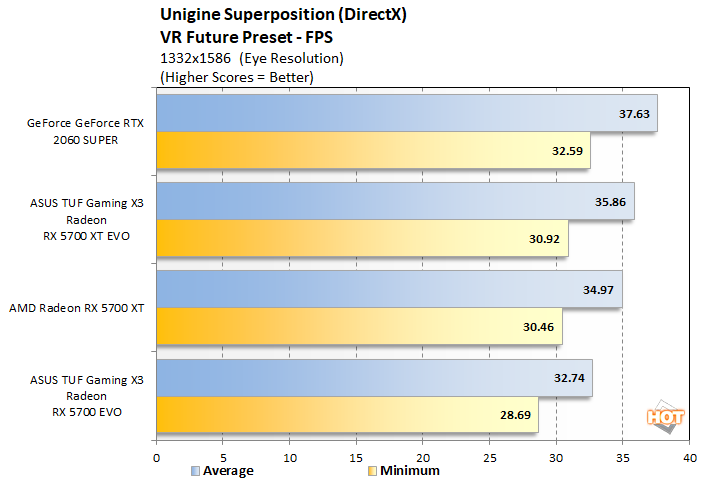
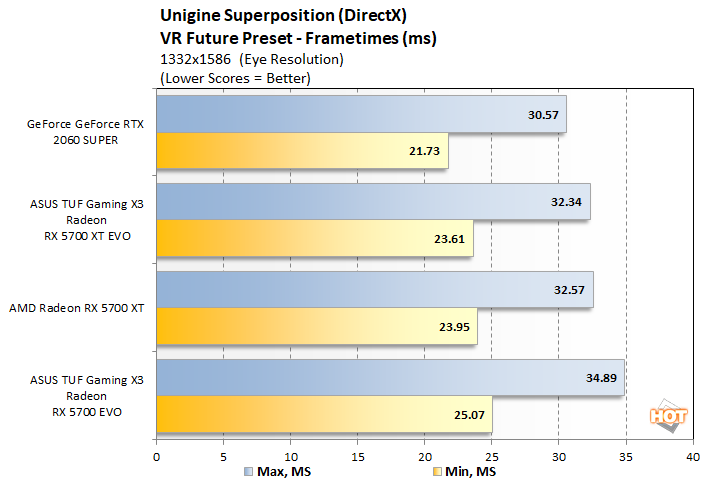
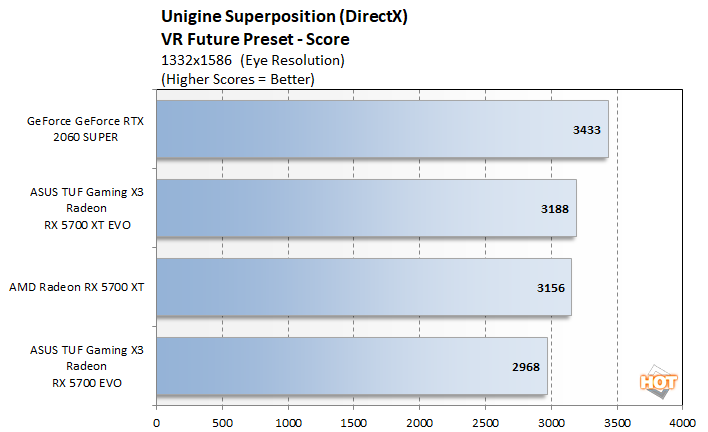
In the VR Extreme test, we see that again the cards fall in line roughly based on their cost and performance class. That $30 saved on the TUF Gaming X3 Radeon RX 5700 EVO does not look like it was worth it, however. The price/performance curve hasn't really peaked out yet in this price class, and that little extra cash goes a long way towards overall performance.
|
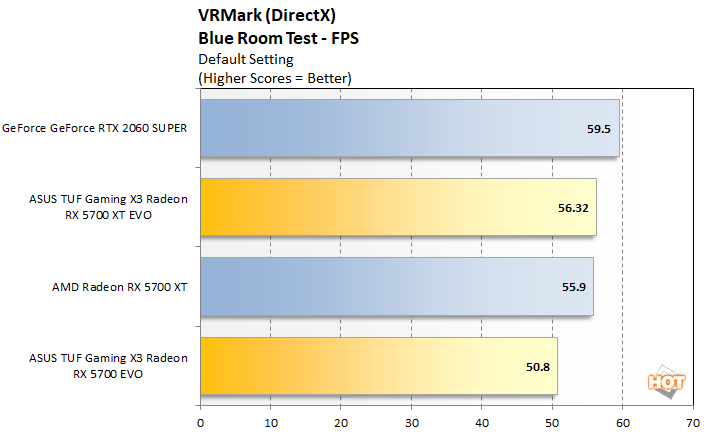

In VRMark, again the Radeons fall behind the lone GeForce competition, but otherwise everything seems to be in order. The difference between the faster TUF Radeon RX 5700 XT and slower TUF RX 5700 outstrips the price difference and as a result the more expensive card is once again the better value. The reference design is just a hair behind our custom card but as we'll see later on, there are other benefits to partner cards than just performance (ooh, foreshadowing).
|
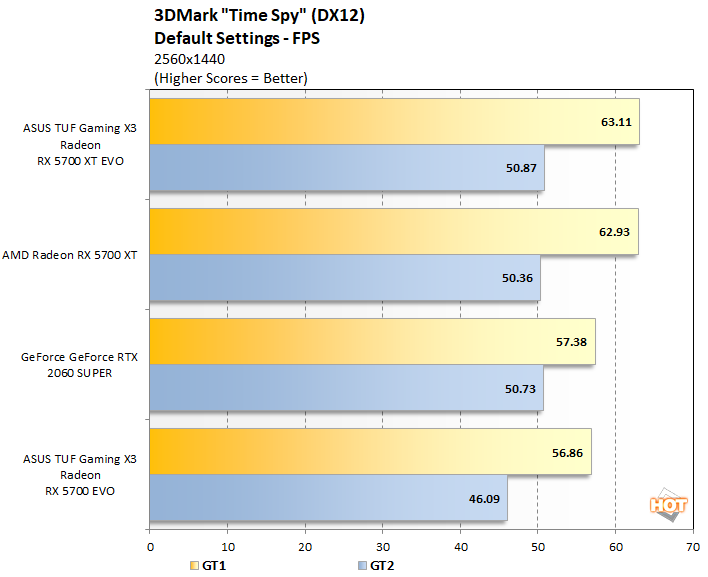

In the DX12-based Time Spy suite, the Radeon RX 5700 XT cards, especially the TUF X3 version, beat out the GeForce. The overall 3DMark score considers the physics test, which we're not exactly interested in here because our graphics cards are the stars of the show. On the other hand, the graphics score shows a larger margin of victory for the ASUS RX 5700 XT card, though once again the slower RX 5700 brings up the rear.
|
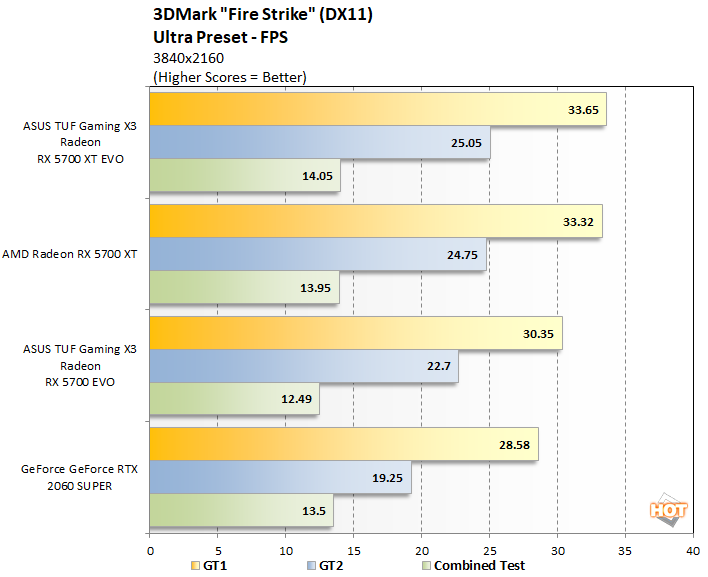

In Fire Strike Ultra, the Radeons pick up a huge win on the GeForce, though once again the margin between the two RX 5700 XTs is pretty slim. As the frame rates show, the animation is much smoother at the 4K UHD resolution on all of our Radeon cards compared to the GeForce. Both Radeon models just have a ton of rendering resources that get stretched to their limits at this punishing setting. Out of each of the individual tests, it's Graphics Test 2 which focuses on particle effects and simulation that shows the biggest difference. The slower TUF RX 5700 wins out by around 15% over the GeForce, where the faster TUF RX 5700 XT puts up a 30% margarine of victory.
Now that we've got the more synthetic workloads under control, it's time to move on to a suite of gaming tests.


